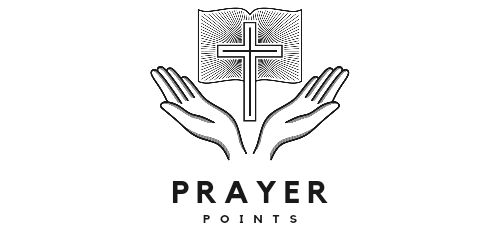Jesus Prayer
Prayer Points: Jesus Prayer, What is the Catholic prayer for faith, What is the most important prayer in the Catholic faith, What are the 3 powerful prayers Catholic, What are the 3 main Catholic prayers, What is the most beautiful prayer in the Catholic Church, What is an example of a faith prayer, What is the morning prayer of faith, What is Saint Faustina prayer, What is the prayer I trust in you, What is the prayer of St Faustina to St Joseph, What is the prayer for the Holy souls St Faustina, What is a powerful prayer for trust, What is the prayer of trust for St Teresa, What did Jesus say to St. Faustina, How do you pray St. Faustina novena, What are the praises of St. Faustina?, Jesus, i trust in you prayer st faustina,
Let’s Pray
Jesus Prayer, in Eastern Christianity, a mental invocation of the name of Jesus Christ, considered most efficacious when repeated continuously. The most widely accepted form of the prayer is “Lord Jesus Christ, Son of God, have mercy on me.” It reflects the biblical idea that the name of God is sacred and that its invocation implies a direct meeting with the divine.
The tradition of the Jesus Prayer goes back to the “prayer of the mind,” recommended by the ancient monks of the Egyptian desert, particularly Evagrius Ponticus (died 339). It was continued as the “prayer of the heart” in Byzantine Hesychasm, a monastic system that seeks to achieve divine quietness. Since the 13th century, mental prayer was frequently connected with psychosomatic methods, such as a discipline of breathing. In modern times the practice of the Jesus prayer was popularized by the publication of the Philokalia (1782), an anthology of texts by various authors on mental prayer. The Jesus Prayer is commonly recited with the aid of a prayer rope.
The Jesus Prayer, also known as The Prayer, is a short formulaic prayer, esteemed and advocated especially in Eastern Christianity and Roman Catholicism:
It is often repeated continually as a part of personal ascetic practice, its use being an integral part of the eremitic tradition of prayer known as hesychasm. The prayer is particularly esteemed by the spiritual fathers of this tradition (see Philokalia) as a method of cleaning and opening up the mind and after this the heart (kardia), brought about first by the Prayer of the Mind, or more precisely the Noetic Prayer (Νοερά Προσευχή), and after this the Prayer of the Heart (Καρδιακή Προσευχή). The Prayer of the Heart is considered to be the Unceasing Prayer that the Apostle Paul advocates in the New Testament. Theophan the Recluse regarded the Jesus Prayer stronger than all other prayers by virtue of the power of the Holy Name of Jesus.
Though identified more closely with Eastern Christianity, the prayer is found in Western Christianity in the Catechism of the Catholic Church. It also is used in conjunction with the recent innovation of Anglican prayer beads. The prayer has been widely taught and discussed throughout the history of the Eastern Catholic Church and Eastern Orthodox Church. The ancient and original form did not include the words “a sinner”, which were added later.
The Eastern Orthodox theology of the Jesus Prayer as enunciated in the 14th century by Gregory Palamas was generally rejected by Latin Church theologians until the 20th century. Pope John Paul II called Gregory Palamas a saint, a great writer, and an authority on theology. He also spoke with appreciation of hesychasm as “that deep union of grace which Eastern theology likes to describe with the particularly powerful term “theosis”, ‘divinization'”,and likened the meditative quality of the Jesus Prayer to that of the Catholic Rosary.
The prayer’s origin is the Egyptian desert, which was settled by the monastic Desert Fathers and Desert Mothers in the 5th century. It was found inscribed in the ruins of a cell from that period in the Egyptian desert. A formula similar to the standard form of the Jesus Prayer is found in a letter attributed to John Chrysostom, who died in AD 407. This “Letter to an Abbot” speaks of “Lord Jesus Christ, son of God, have mercy” and “Lord Jesus Christ, son of God, have mercy on us” being used as ceaseless prayer.
What may be the earliest explicit reference to the Jesus Prayer in a form that is similar to that used today is in Discourse on Abba Philimon from the Philokalia. Philimon lived around AD 600.The version cited by Philimon is, “Lord Jesus Christ, Son of God, have mercy upon me,” which is apparently the earliest source to cite this standard version. While the prayer itself was in use by that time, John S. Romanides writes that “We are still searching the Fathers for the term ‘Jesus prayer’.”
In Jesus’ Name. Amen!.
A similar idea is recommended in the Ladder of Divine Ascent of John Climacus (circa 523–606), who recommends the regular practice of a monologistos, or one-worded “Jesus Prayer”.The use of the Jesus Prayer according to the tradition of the Philokalia is the subject of the 19th century anonymous Russian spiritual classic The Way of a Pilgrim, also in the original form, without the addition of the words “a sinner”.
Original Prayer By “Catholic Life”, “Wikipedia” And “Xavier”
Get More Powerful Prayer Points For Today and feel free to download Christian DJ Mixtapes.
